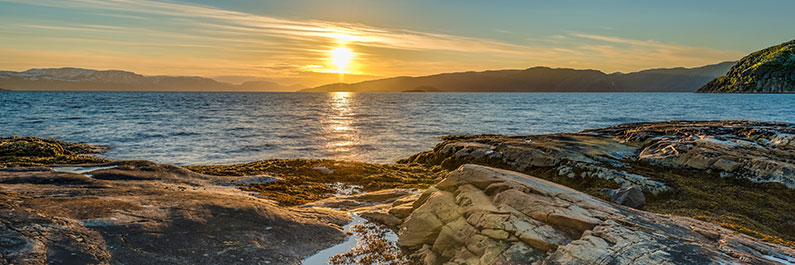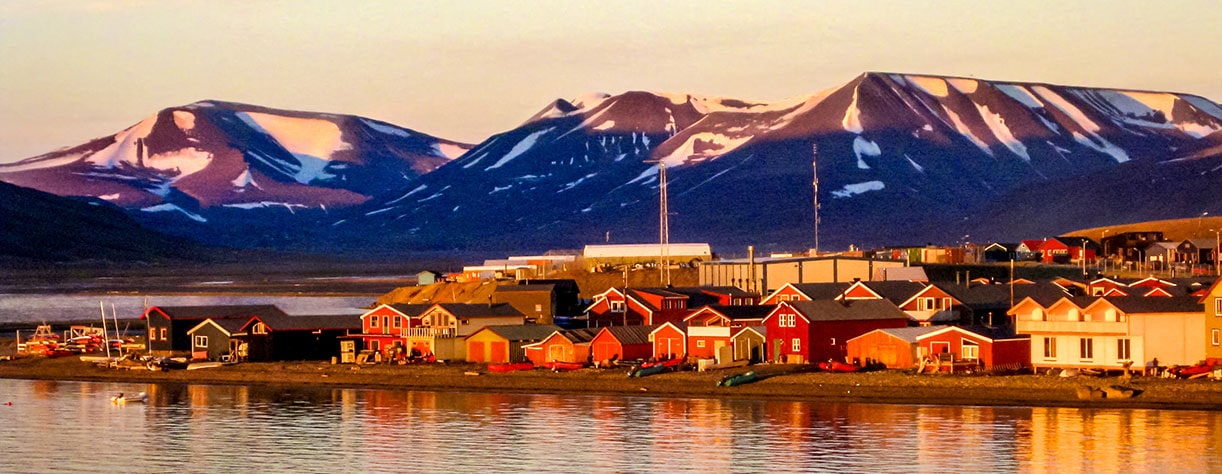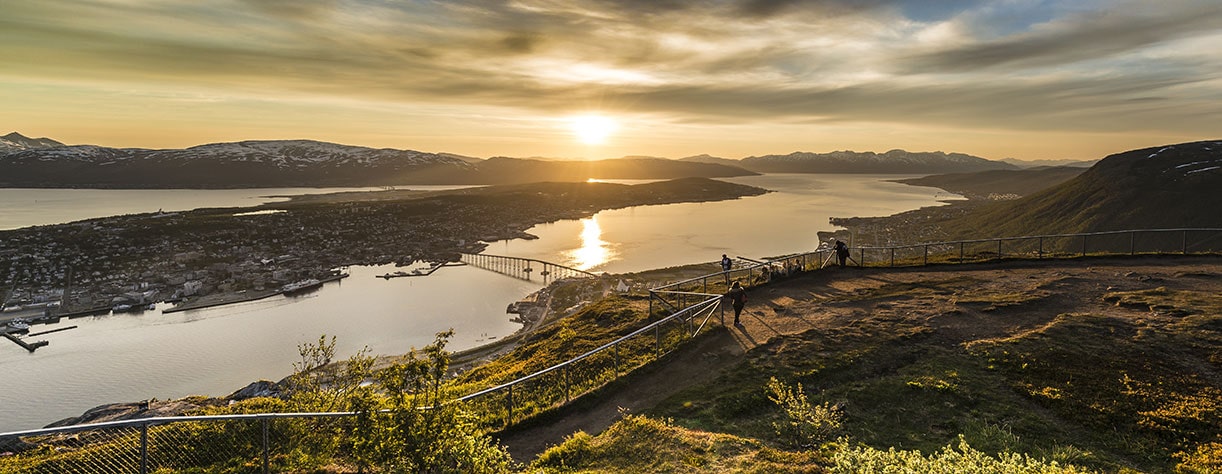It doesn't matter how old you are when you discover that some places experience a midnight sun – it just sounds otherworldly and unnatural. But for those living north of the Arctic Circle, in places such as Lofoten or Tromsø in Northern Norway, it's something they get used to pretty quickly, because it's an annual event. In fact, the further north you are, the longer the sunlit period will be. In Spitsbergen (a Norwegian island 800km north of the mainland), for example, it doesn't set at all between mid April and mid August!
What is the midnight sun?
The midnight sun isn't too mysterious a natural phenomenon once you understand what's happening north of the Arctic Circle, so here's a brief explainer. The earth orbits the sun in a roughly circular shape every 365 days, or once a year. It is also spinning on an axis (an imaginary line passing through the North Pole and the South Pole), at one revolution every 24 hours. That's why you have the day and night cycle every 24 hours; sometimes your part of the planet is facing the sun (daytime); other times you're facing out into the darkness of space (night time). And between the two are sunrise and sunset, where the sun is partially or wholly behind the horizon.
The interesting thing is that the polar axis isn't at 90° to the orbital path; the earth tilts about 23°, but the axis always points the same way in space. What this means is, as the earth goes around the sun, the far North is always facing it in the summer, even at "night time". In the winter, when the earth has moved halfway around its orbit, the opposite happens: the North of Earth is constantly tilted away from the sun, so it’s always hidden well below the horizon.
Throughout most of mainland Europe, we're used to the hours of daylight getting longer in summer and shorter in winter. It's exactly the same thing happening, but it's just less extreme because the curve of the earth means we're not quite facing the sun in the dead of night, even in winter. You might notice that at the height of summer in the UK, the sun won't set until 9:40pm and will rise again at 4.40am, but it never really gets completely dark as the sun will be just behind the horizon.
So the further north you are, the more severe the difference in day length between summer and winter. At the equator, daylight and night-time are more or less equal in length (12 hours), and as you go further south, you'll experience the same effect as in the North, just 6 months later. The Arctic Circle is the line around the earth at which you'll have at least one day per year with a midnight sun, and one day without a sunrise at all.
How to get the midnight sun experience
Just like seeing the Northern Lights for the first time, knowing the science behind the midnight sun does nothing to take away from the wonder of it all. If anything, it makes you marvel at the majesty of nature, and gain a new appreciation of the seasons and what they must have meant to our ancestors. Wherever you are in the world, it's worth the trip. On a cruise to the Arctic Circle at the right time of year, there's an almost New Year's Eve feel to proceedings, when midnight comes and you can still very much see the sun hanging above the horizon.
The lowest latitude you can get a midnight sun in the Northern Hemisphere is at 66°. That's the Arctic Circle, an imaginary line that runs through northern Norway, Sweden, Finland, Russia, Alaska, Canada and Greenland, and just skirts the northern coast of Iceland. If you're right on the Circle, you have to make sure you're there on the exact day the midnight sun happens or you'll miss it. Keep going north, and you'll get a longer window of opportunity.
Norway — the land of the midnight sun
You'll often see North Cape (Nordkapp) in Norway described as "the land of the midnight sun", but you don't have to go quite that far to experience it. Tromsø, the Lofoten Archipelago or Vesterålen will do just fine. You don't even need to be on terra firma at the stroke of midnight – it's a beautiful thing to spend it on board, celebrating the new day with new friends and those close to you. Of course, if you ever get the opportunity to visit North Cape, jump at the chance, as it's a delightful part of Norway; just don't mistake it as the only place to experience the midnight sun!
Once you've experienced Norway’s midnight sun on a summer cruise, the natural next step is to explore all that Norway has to offer outside of the summer season. And it’s only in winter that you get the best chance to witness the Northern Lights — nature's enchanting light show — an experience which gets more likely the closer you get to the North Pole.
These two natural phenomena are what makes cruising Norway a year-round marvel. You can find a midnight sun adventure and your first Northern Lights experience with Fred. Olsen, so why not check out all our Norway cruises to find the perfect one for you?





